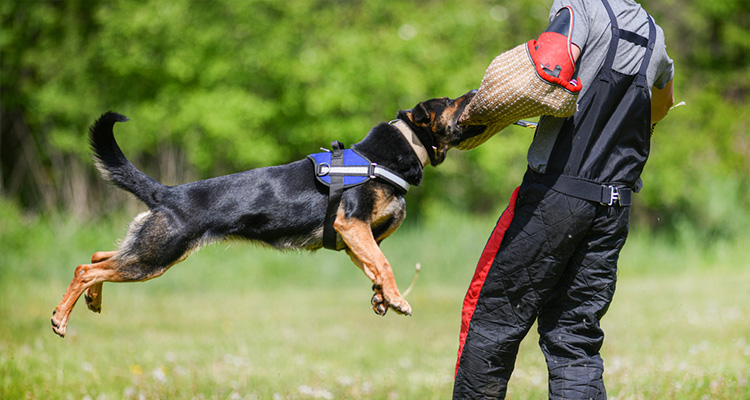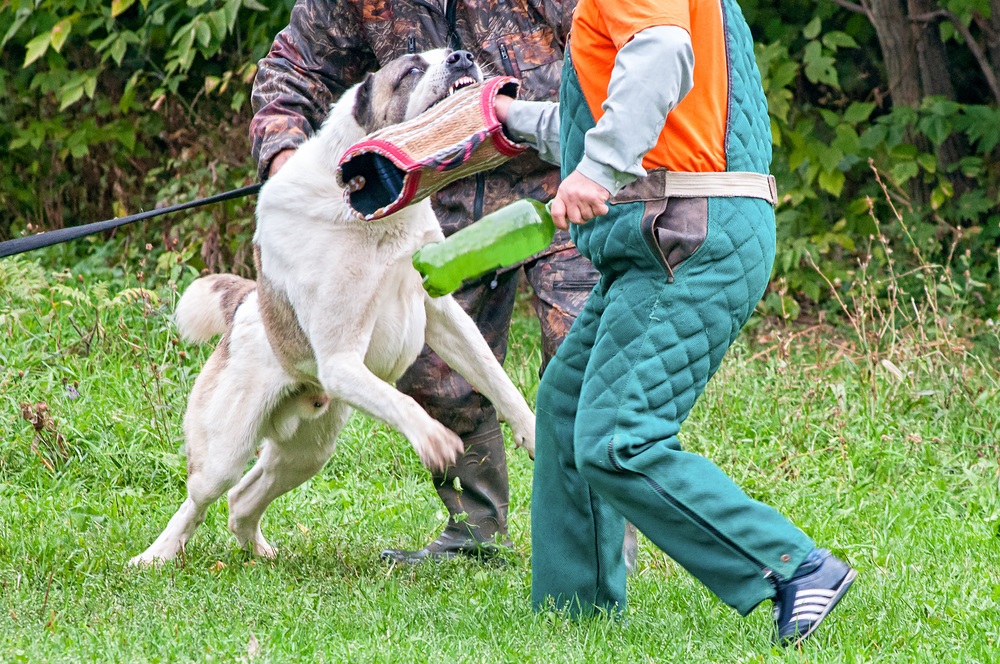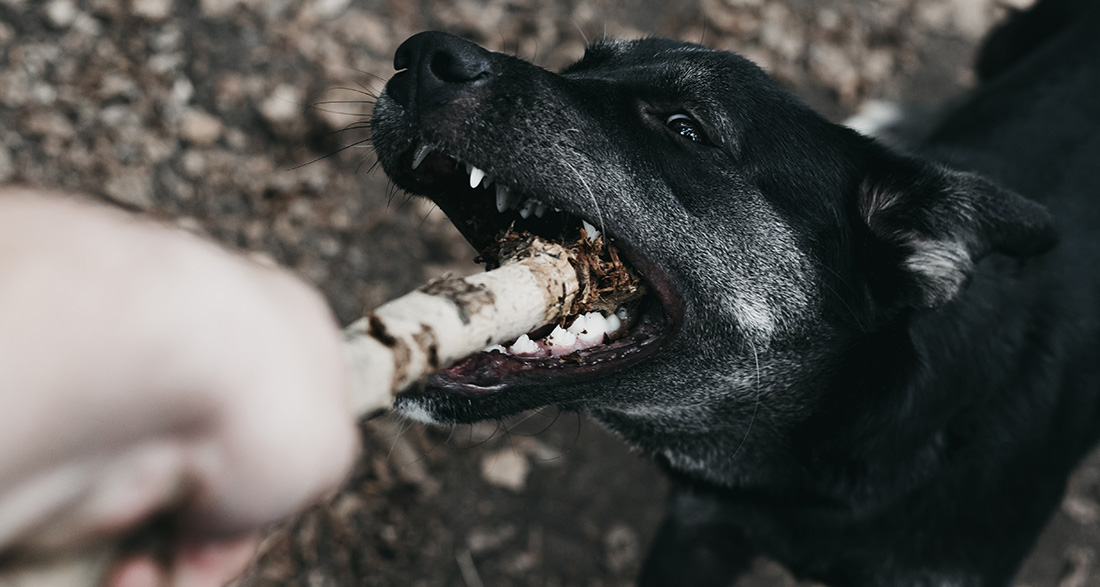A dog bite can be very painful, and a severe dog bite injury, especially in the face and neck area, can be particularly dramatic. Even small injuries can be problematic. Dog saliva contains bacteria, making the risk of wound infection present in any bite wound. Therefore, it is crucial that every dog bite is promptly treated by a doctor. First aid is of utmost importance. Here’s how to react correctly to a dog bite!
First Aid – What to Do After a Dog Bite Injury?
If a dog is inadvertently provoked or frightened, it can lead to problems. Dogs often give a warning before biting. If this warning is ignored or not understood, a dog bite can occur. Sometimes, the skin is only superficially scratched. However, with their powerful teeth and jawbones, a dog can also inflict severe injuries on the victim.
In the following section, we explain how to react when the accident happens. We also provide a brief overview of treatment options and offer tips on preventing dog bites.
Treatment of Minor Dog Bites
For minor bite wounds, the following first aid measures should be taken:
- Clean the bite wound with lukewarm water and soap once it is no longer heavily bleeding to remove as many germs as possible.
- Ideally, thoroughly disinfect the wound afterward.
- Cover the wound completely. A small wound may only require a plaster, but if treating a larger bite wound, you will need sterile dressing material, such as a gauze pad.
- Nonetheless, see a doctor as soon as possible!
Treatment of Severe Dog Bites
For a bite wound with heavy bleeding, take the following first aid measures:
- Many victims go into shock immediately after a dog bite. Speak to the person and remain as calm as possible.
- Apply a preferably germ-free, soft material (e.g., sterile dressing) to the bite wound or into the wound to stop the bleeding.
- A severe bleeding requires a pressure bandage.
- The patient needs immediate medical attention. If you cannot stop the bleeding, call emergency services at 911.

Treatment of Dog Bites – When to See a Doctor?
Medical treatment for a dog bite wound is generally advisable. Even if the dog only leaves small wounds on the skin, these can be quite deep, increasing the risk of infection. This is mainly due to the fact that bacteria from the dog’s saliva can penetrate the tissue and cause inflammation. However, the wound edges at the bite site quickly stick together, making further wound care seem unnecessary. Therefore, small wounds are more dangerous than larger ones.
The treatment for a dog bite injury depends on the affected body part and the extent of the injuries. The doctor will undoubtedly apply a bandage. It is important for the doctor to receive more detailed information about the dog that bit. The breed and vaccination status of the animal are crucial to determine if a rabies vaccination is necessary.
If you have not been bitten by your own dog, try to obtain such information from the owner and relay it to the doctor.
Preventing Infections – Do You Need an Antibiotic?
In some cases, the doctor may prescribe antibiotics to prevent bacterial wound infection. For fresh, deep bite wounds, as well as bites in critical body regions, immediate treatment may be advisable. These critical areas include the face, genitals, hands, feet, and areas near joints. Unfortunately, children often experience dog bites on their faces due to their small size.
Patients with an increased risk of infection or those with implants, such as artificial heart valves, are often given preventive antibiotics after a dog bite. In the case of a bacterial wound infection, antibiotic treatment is performed in any case.
How Quickly Do You Need a Tetanus Shot?
A visit to the doctor after a dog bite is also advisable because the patient may need a tetanus or rabies vaccination. These vaccines must be administered quickly, as both diseases are life-threatening.
The rabies vaccine must be given within 72 hours of the bite to reliably prevent an infection. Please do not hesitate to contact the doctor if you have a dog bite injury.
Is There a Reporting Requirement?
If rabies is suspected in the biting dog, it must be reported. A dog bite is not a criminal offense, but the reporting requirement by the treating doctor can lead to a criminal complaint.
Can You Claim Damages?
For the owner, it can be expensive if their own dog has actually bitten someone. Whenever a dog injures someone or damages something, the dog owner is always liable. This is also the case if the victim or their dog has exhibited misconduct. The victim must file the report, and typically, the owner of the biting dog will have to pay damages.

Preventing Dog Bites
Especially children suffer severe injuries when bitten by dogs. Dog bites are avoidable if certain rules are followed.
- It is crucial never to leave children alone with a dog, even if it is a well-behaved household dog. The dog may perceive the child as a threat during play and bite.
- Pay attention to warning signs from the dog, such as the animal withdrawing, growling, ears laid back, lifting the lips, baring teeth, and a raised or tucked tail.
- It is important not to disturb the dog while eating or sleeping. Taking away a dog’s food or suddenly (and roughly) touching it while it sleeps could lead to biting.
- Mother animals protect their puppies. Make sure the mother agrees if, for example, you pick up a puppy.
- Do not get between two fighting animals. The risk of injury to you is too great.
- Noise and loud shouting (even from happy children) can be perceived as a threat.
- Do not touch dogs you do not know, or let your children touch them, until the owner allows it. Let the dog sniff first before touching it.
If a strange dog approaches you and no owner is in sight, remain calm. You can first try saying “sit” firmly. Most dogs know this command, and if the dog just looks around a bit, that might be enough.
If this strategy does not work and the dog does not seem friendly, here are some tips:
- Stand still. If you start running, it may trigger the dog’s hunting instinct in the worst case. The animal is likely faster than you.
- Do not stare directly into the dog’s eyes; this is perceived as threatening. Also, stand to the side of the animal.


